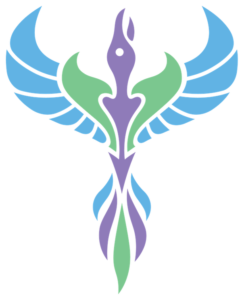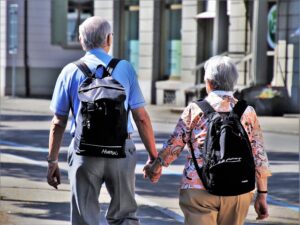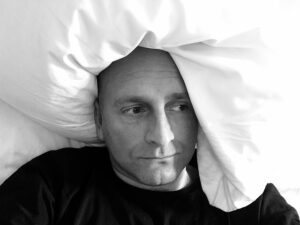The chiropractor Brooklyn Blog at Community Chiropractic & Acupuncture located in Park Slope, Brooklyn 11215, was started to let you know how we apply both Eastern and Western medical theory to establish a diagnosis and treatment plan designed specifically for each patient.
Furthermore, our goal is to help our patients enjoy an optimal quality of life with improved physical health, mental well-being, and a sense of spiritual tranquility.

Take a look at some of our health tips below in our chiropractor Brooklyn blog for information about improving your life.
Work begets stress; acupuncture works to reverse this
Whether you are deskbound or work on your feet, working on the road or from home, your job is sure to cause some degree of stress. And whether your job is physically demanding or mentally exhausting (or both), it is important to remember that mental and physical stress go hand in hand. A stressed out, exhausted you means a less productive and efficient you and perhaps some companies are finally starting to realize this. Extracting the maximum amount of labor out of a given individual without looking out for their physical and mental and well-being is the best way to end up with an exhausted, stressed out workforce that benefits exactly no one. At Community Chiropractic & Acupuncture of Park Slope, we are guardians of workplace wellness. We seek to use our natural healing modalities to keep the stress of your job from negatively affecting the balance of your life. Read on to find out how.
Read MoreAcupuncture can help you fall and stay asleep
Difficulty sleeping is one of the most painful experiences in life; without regular, restorative sleep, our bodies are forced to work harder, under compromised conditions, and the results can be horrendous. Not getting enough rest has been linked to a host of serious health problems, from high blood pressure to heart disease, asthma to inflammation, the list seems to be endless. Indeed, lack of sleep weakens the immune system and decreases energy which leads to anxiety, depression and daytime sleepiness. Because lack of sleep affects almost every facet of daily life, humans have set store by solving it; unfortunately, it is not as simple as that. Primary insomnia has no identifiable underlying cause while secondary insomnia is a symptom of another condition. So successfuly treating insomnia depends on first having an accurate diagnosis and secondly selecting the righ treatment. Acupuncture is one of these treatments that shows great efficacy without the side effects that sleeping pills and other treatments have become infamous for.
Read MoreAcupuncture for headaches
While acupuncture would never purport to be a be-all, end-all treatment for headaches, it can directly address the the root causes of the headache and thereby ease the symptoms. Acupuncture needles are placed in accordance with the meridians of Traditional Chinese Medicine, which often coincides with nerves throughout the body. Insertion of the needles at these strategic points will release such important hormones as endorphins which trigger a pain-killing response in the body. With very little risk for side-effects, acupuncture has emerged as one of the premier alternative-medicine treatments for headaches. For people looking to avoid the side-effects of prescription drugs and other traditional forms of headache treatment, it is worth asking whether acupuncture could work for you.
Read MoreA natural approach to treating Thoracic Outlet Syndrome
Thoracic Outlet Syndrome (TOS) is a painful condition that occurs when nerves and blood vessels in the thoracic outlet become copmressed. The thoracic outlet refers to the space between the collar bone and the first rib, and compression of this zone is associated with pain and dysfunction in the upper extremities. Symptoms depend on whether nerves or blood vessels are impinged upon. With nerves:
- Tingling, numbness and weakness in the arms and hands
- Weakness or pain in the shoulders
- A weakening grip
With blood vessels:
- Discoloration of the hands
- Blood clots
- Swelling and pain in the arms
This is a serious condition that requires a thoughtful approach to treatment- that being said, many patients experience significant improvement with conservative therapies like chiropractic and acupuncture.
Read MoreYour center of gravity determines your stability
This hypothetical location refers to the point in your body where your mass appears to be concentrated. In a stationary world, our COG is located anterior to the second sacral vertebra, but because we are always in motion, this position is fluid- changing with every motion of the upper and lower bodies, as well as the limbs. Understanding your center of gravity (along with knowing where it is) has important implications for balance and stability, injury prevention and overall wellness. Let’s find out a little bit more about the importance of your center of gravity.
Read MoreAcupuncture for sports performance starts by improving muscle function
No matter your level of athletic ability, simply putting your body through the demands of physical activity causes stress to your muscles. Systemic muscular stress is associated with fatigue, decreased athletic performance and injury; not surprisingly, acupuncture is becoming one of the premier ways to respond to these limitations. In a sports setting, acupuncture is used to:
- Relieve pain
- Speed the healing process
- Increase muscle strength and resilience
- Boost stamina
Athletes across the world are finding that acupuncture is a natural, effective tool that helps them reach peak levels of performance. So how does it work?
Read MoreThe older you get, the more important strength training becomes
No matter how much we fight it, strength is harder to come by in old age. We are no longer enjoy the resilience of our strapping young bodies, which means that we are more vulnerable to injury; when injury does strike, it takes more out of us. That is why we believe, in accordance with general health guidelines, that strength training is essential to well-being in old age. By focusing on strengthening muscles in all the important areas of your body, you remain more able to function and more resilient to injury. Read on for more information about the importance of strength training for over-50s.
Read MoreSleep is rejuvenation for your spine
Whether you live with no back pain, chronic back pain or a degenerative spinal condition, sleep offers the same opportunity for all of us: rest and restoration. It should be a time when cells in the muscles, joints, discs and bones are able to find a brief reprieve; time to repair in an extended position. The problem for many people with back pain is that the very condition prevents them from sleeping: with no distractions, all they have left is to focus on the pain. A vicious cycle is created that prevents you from getting the rest your spine needs to repair. At Community Chiropractic & Acupuncture in Park Slope, we prioritize sleep in the lives of all our patients. Here are some tips for sleeping with certain spinal conditions.
Read MoreSleep should help, not hurt, your sciatica symptoms
The reason for this is that sciatica is caused by compression of the sciatic nerve, the largest in the human body. For some people, lying down and sleeping is the only part of a 24-hour cycle that offers relief from their symptoms; for others, laying down can actually increase the level of compression and make the condition worse. The latter includes people who feel that the pain is sharpest in the morning time, upon waking. No one deserves to dread sleeping because of a painful spinal condition, but this is exactly what can happen with sciatica.
Read MoreWe understand you have a busy schedule
Every minute matters in the morning time. Whether you like to hit the snooze button and reap those extra minutes in bed, or hop straight into a shower for your wake up call, there is one crucial step that no one should forget- at least no one who worries about back pain. It’s the (at least) three-minute stretch routine of yoga poses that start your spine off on the right foot.
Read MoreMoreover, at Community Chiropractic & Acupuncture we are committed to providing individualized and compassionate patient care.
Dr. Karen Thomas founded the practice over 30 years ago with the express purpose of providing leading-edge healthcare to the Park Slope community.
As a result, the practice has grown considerably since then, and moved from its original location at Lincoln Place and Sixth Avenue to Eighth Avenue at Union Street, to its present location at 182 8th Ave. Brooklyn, NY 11215
We want you to know that we are prepared for you.
Furthermore, for the protection of our customers and our employees, we’ve followed the guidance of the W.H.O. and the I.C.C. and their directions to business owners.
Additionally, we have disinfected all surfaces and implemented recommended strategies to keep safe distances between all customers and employees to prevent any transmission.
In conclusion, our team is on top of the most current information available to businesses.
Please feel free to contact us with any questions about your health at 718-398-3100
We all speak English and...
Dr. Gabe is fluent in Spanish and Portuguese
Dr. Thomas speaks some Spanish but is not fluent
Yolanda, our office manager is fluent in Spanish
Steve, our front office assistant speaks some Chinese but is not fluent
Sofia, our medical biller is fluent in Russian










